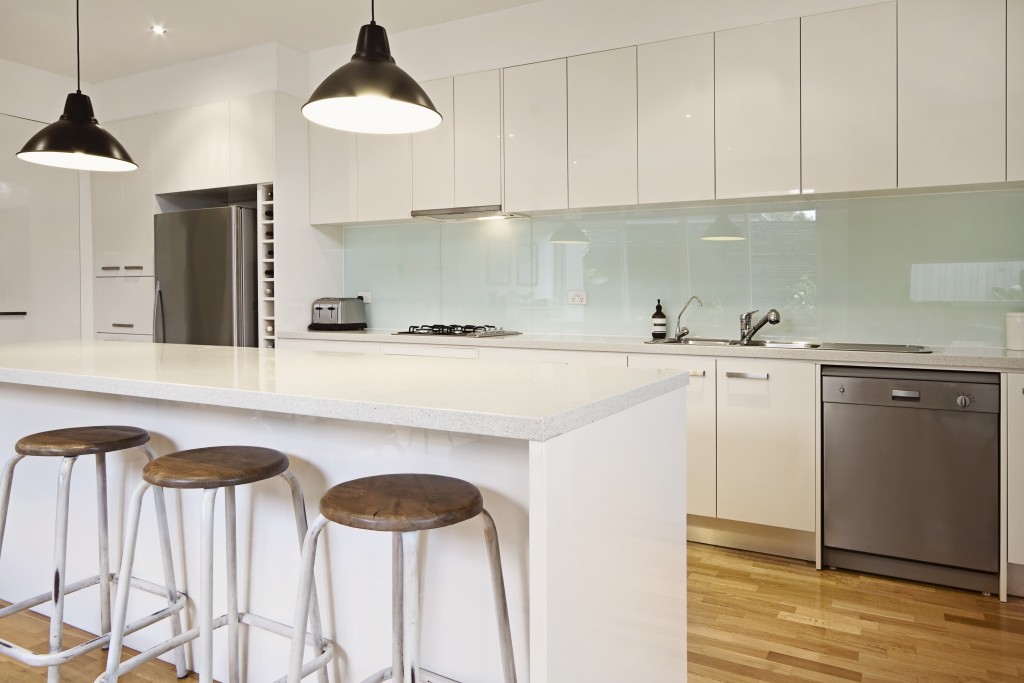Lighting has a great impact on a room’s ambiance. It could make it seem cold, warm, somber, or cozy.
At home, different rooms have different lighting needs. For example, in the dining area, you would want a cozy ambiance but at the same time, you would also want full lighting to properly see what you are eating. However, sometimes, the dining room could be set more dramatically for occasions. So you will need some flexibility for this room. The bedroom would need a relaxing atmosphere and the living room a warm and inviting feel.
There are several ways to achieve these effects. We have here a few lighting techniques you could mix and match to have what you want for your rooms.
Natural light
The most refreshing light of course is the one we get from the sun, streaming into our windows during the daytime. For this reason, various home designs like those influenced by Scandinavian aesthetics, use glass walls to let the maximum amount of sunlight in.
Pin lights and spotlights
It’s not just art galleries that have use for pin lights or spotlights. Although they are rare in homes because of their extravagant effect, they’re very good to have when you’re having a dinner party and you wish to highlight some of your ornaments. It doesn’t even have to be a painting. You could put pin lights on a gallery wall, for example, highlighting your family mementos. Or maybe you could put some spotlight on a sculpture, or a simple plant that has outstanding features.
If you don’t want to focus on a specific object, you could control the areas you want to light up using commercial LED downlights. As these are not as bright as fluorescent lamps, you can easily assign them to sections of the room. You can opt to switch on one or two, or all of the lights to control the brightness or dimness of the area. Downlights can also be used to highlight walls without flooding the entire room with brightness. It’s perfect for creating contrasts between light and shadows.
Paneled LED bulbs
Similar to the effect of downlights, boxed or paneled LED bulbs are usually attached to the back of highlighted panels or posts. They give the illusion that the panel or post is glowing. Not many homes use this highlighting method as it uses up a lot of bulbs. This is common in churches, commercial spaces, and boutiques.
Floor lighting
Another highlighting technique is to place the lights on the floor. This is not yet popular in homes as it means they will have to be embedded in the flooring with a strong cover. Again, they are usually used in commercial spaces. However, they are good ideas for illuminating passageways at night. Low-watt bulbs could be used and distributed sparsely.
Lamps or overhead lights
Interior designers often recommend using floor lamps instead of overhead bulbs to light up a room. It’s because overhead light could be overwhelming. However, again, as your rooms have different purposes, so should your light be differentiated. For sure, your kitchen would need bright lights that wouldn’t cast shadows. The best would be the overhead lights.
Studies and libraries would also need to be well-lighted. But some people who don’t like too much brightness as it could distract them from their focus prefer to work with table lamps. Make sure though that the lamp you’re using is meant for working because reading in low light could also damage your eyes.
Chandelier

The chandelier is not the best for illuminating a place. It’s mainly for decorative purposes. However, chandeliers, when combined with other lighting schemes, could create a dramatic and well-lighted room. Usually functioning as a centerpiece, it could be supported by downlights or spotlights around the perimeters of the room. Some chandeliers can reflect the surrounding light, such as those designed with mirrors and crystals.
Fairy lights
Fairy lights have a whimsical effect. Although they are not mainstays in homes, they’re nice to decorate rooms with. They’re also quite popular in decorating boudoirs and teenage girls’ rooms. In terms of illuminating anything though, they don’t do much unless you have rolls of them and use them in clumps.
Lighting in the home is usually an afterthought, some people even considering it only after they’ve bought and arranged the furniture. But if you plan it the other way around and imagine the room first, where the lights would be coming from, you could achieve more with your furniture and just a few decorative pieces.





